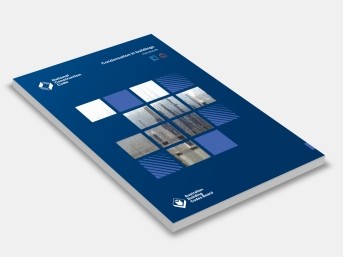Condensation in Buildings Handbook
Australian Building Codes Board
This handbook is one of a series by the ABCB. Handbooks expand on areas of existing regulation or relate to topics that have, for a variety of reasons, been deemed inappropriate for regulation. They provide advice and guidance.
The Condensation in Buildings Handbook assists in understanding the condensation requirements in NCC Volumes One and Two.
It addresses issues in generic terms and is not a document that sets out specific compliance advice for developing solutions to comply with the requirements in the NCC. It’s expected that this handbook guides readers to develop solutions relevant to specific situations in accordance with the generic principles and criteria contained herein.
Condensation is an event which reveals the presence of water vapour in the atmosphere. When the resulting condensate is unable to dry as readily as it forms, it can accumulate to cause problematical wetting in buildings. This handbook discusses that risk and emphasises the overriding goal of keeping buildings dry, by:
• ensuring they are acceptable when constructed
• detailing them to resist the entry of weather and groundwater
• managing water vapour movement and the temperature of building surfaces it encounters
• ensuring any unavoidable damp or wetness can dry out faster than it can form.
The minimum condensation requirements in the NCC aim to reduce interstitial condensation in walls and roof spaces. However, designers, builders and building occupants can all play an important role in managing condensation. Although the NCC applies mainly to new buildings, this handbook also offers advice for occupants of existing buildings where condensation has become a real or anticipated concern.
Since the design of new buildings is subject to regulatory requirements in the NCC, Chapter 2 reviews how these requirements might constrain or encourage approaches to manage condensation risks. This includes the Performance Requirements, Verification Methods and DTS Provisions for condensation management in Volumes One and Two.
Many of the situations discussed refer to homes or domestic construction. Homes are mainly designed and built with limited access to specialist advice on potential risks arising from new materials and methods of construction. When they are renovated, changes which might reduce the building enclosure’s ability to stay dry are not always recognised.
Commentary and examples relevant to larger commercial buildings are noted where they occur, but the handbook does not attempt to deal in any detail with the wide variety of indoor environments that can be found in such buildings.
The construction details and illustrations focus mostly on colder climates rather than hotter humid climates. This is because the research undertaken to develop this handbook is based on extensive overseas research and experience with condensation management currently available. Where possible, these details have been customised to Australian conditions, however, this was not possible in all instances.
Contents:
1: Background
2: Condensation Management In The NCC
3: Condensation Concepts
4: Dry Buildings
5: Design, Construction And Occupant Checklists
Appendix A: Acronyms
Appendix B: Compliance With The NCC
Appendix C: Glossary
Appendix D: Supplementary Material
Appendix E: Standards
Appendix F: References And Further Reading
